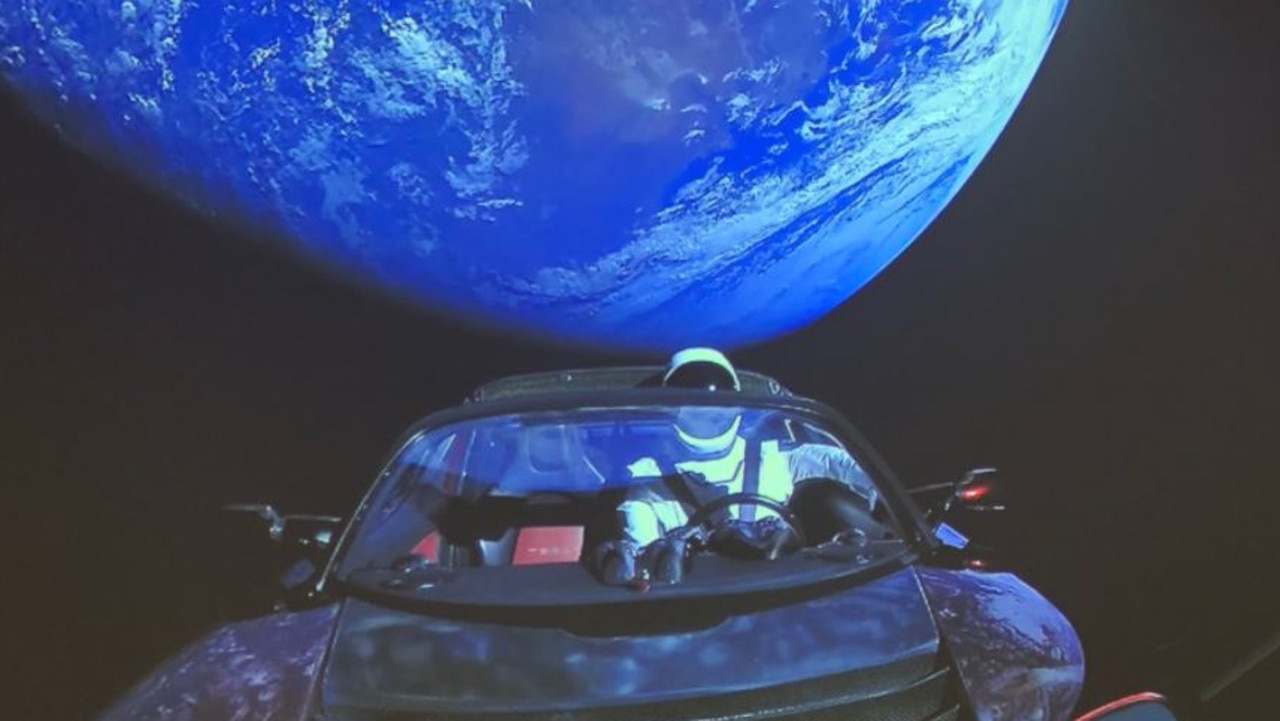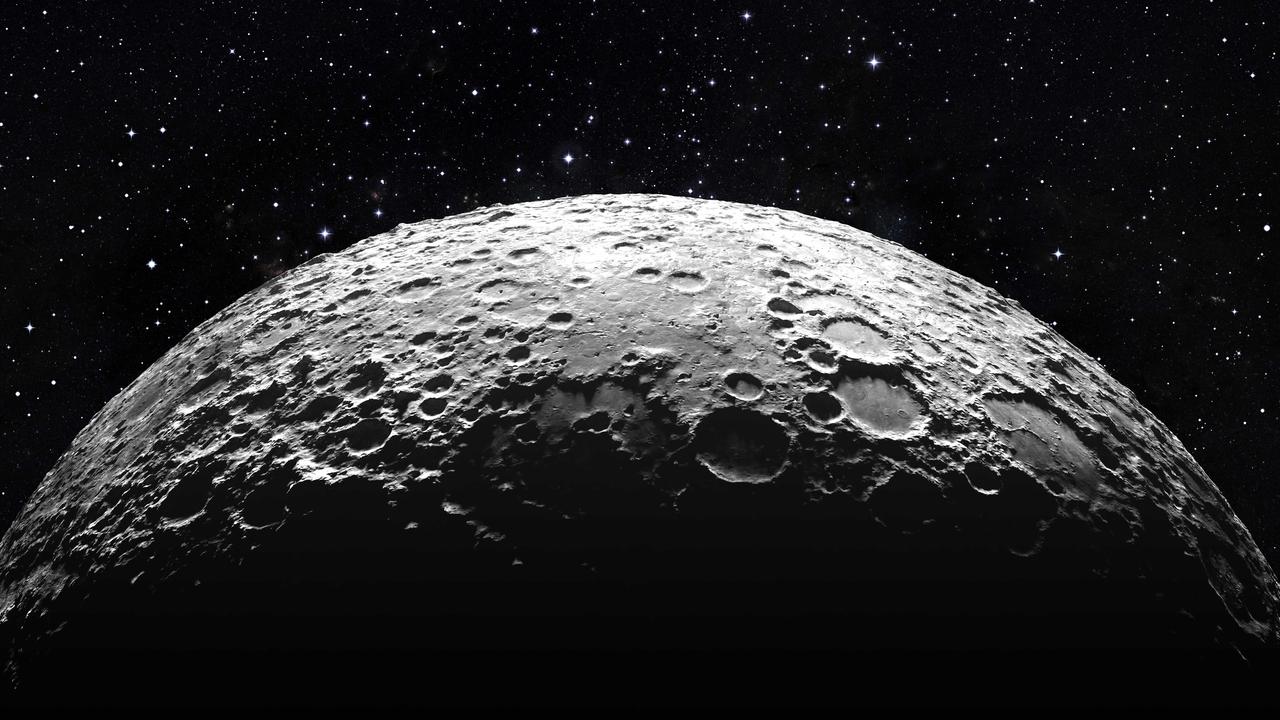More than 40 years since man stepped on the moon, the space race to return is heating up
It’s been more than 40 years since man last stepped on the moon after the high cost of space travel took its toll. But now several companies are racing to take humans back to the lunar surface

READING LEVEL: GREEN
For more than four decades, the world has been asking why no human has set foot on the moon since 1972.
It is a good question.
The Americans proved in 1969 that it was possible. In fact, they ended up putting 12 astronauts on the moon over six missions.
So, why haven’t those missions been followed up by the US or other countries?
The answer is simple: cost and the right motivation.
Americans first put man on the moon because it was a challenge to be conquered* and set the US apart as the world leader in space exploration.
Then US President John F. Kennedy committed huge amounts of dedicated funding to the Apollo project. It was estimated to have cost roughly $25.4 billion, which is the equivalent of about $163 billion today.
NASA’s portion of the federal budget* peaked at 4 per cent in 1965. For the past 40 years it has remained below 1 per cent, and for the past 15 years it has been about 0.4 per cent of the federal budget.
Governments across the world are still interested in space exploration, but spending the sort of money needed today would require a compelling* reason to go back to the moon rather than just landing on it again.
That motivation now appears to be taking civilians* to the moon.

As the 50th anniversary of the Apollo 11 moon landing approaches, a new space race has started gathering pace with multiple space agencies and companies trying to land humans on the moon by 2024.
NASA is lining up against Richard Branson’s Virgin Galactic, Elon Musk’s SpaceX and Blue Origin, owned by Amazon’s Jeff Bezos, in a who-can-flash-the-most-cash battle of the billionaires.
Each is fighting to build a rocket that can take people to space in the least expensive way. Whoever gets there first will make an enormous amount of cash via exclusive deals with global space agencies.
They’ll carry cargo and astronauts to the moon for sums in the hundreds of millions of dollars and stake a claim as the world’s pioneering space experts.
Here are the main players in the new space race.
NASA
The US space agency has announced an ambitious new mission to return astronauts to the lunar surface by 2024, including the first woman and the next man.
Dubbed Artemis, the mission — named after the twin sister of Greek God Apollo — — will see humans walk on the Moon for the first time in nearly half a century.
NASA claims that as a result of Artemis, it will be able to establish a sustainable* human presence on the moon by 2028 to uncover new scientific discoveries, demonstrate new technological advancements, and lay the foundation for private companies to build a lunar economy.
NASA wants to build a “Lunar Gateway” in orbit around the moon, a mini version of the International Space Station that will house astronauts, laboratory experiments and more. Construction on Gateway is expected to begin as soon as 2022, and NASA plans to complete the base within the next 10 years.
NASA boss Jim Bridenstine said in March: “We will go to the moon in the next decade with innovative, new technologies and systems to explore more locations across the lunar surface than ever before.“This time, when we go to the moon, we will stay.”
NASA is developing new rockets, called Ares I and Ares V, for the return trip to the moon. These will be larger and taller than their Apollo-era Saturn counterparts, and will be able to carry significantly more weight.
The rocket project is called Constellation and calls for the new inventions to surpass the Saturn vehicles in capability, but to do it on a budget.
“We want to do it cheaper, and we want to do it safer,” said Jeff Hanley who is the manager of the Constellation program. NASA is spending $35 billion to build the new rockets.
“The technologies that we need to do the job are largely in hand,” Hanley said. “In terms of the challenge, it’s really a fiscal challenge — the amount of money that the nation can afford to spend.”
SPACEX
Run by eccentric* billionaire Elon Musk, SpaceX is seen by many as the front runner in the new space race.
It regularly launches its reusable Falcon 9 rockets on missions for agencies such as NASA and the US National Security Agency.
SpaceX’s main goal is launching satellites and eventually astronauts.
But it also has ambitions to travel further using a new long-distance rocket currently in development, dubbed Starship.
If all goes according to plan, Starship will launch a Japanese billionaire on a round-the-moon mission in 2023.
SpaceX has no public ambitions to actually land people on the moon. Its grand plan involves settling other worlds such as Mars.
Mr Musk has repeatedly said the goal of SpaceX is to help humanity become a “multi-planet species”.
In other space news, on June 26, SpaceX launched a Falcon Heavy rocket into space with six satellites that will improve Australia’s weather forecasting.
Australia’s Bureau of Meteorology booked the ride for six satellites — collectively called the Constellation Observing System for Meteorology, Ionosphere and Climate, or COSMIC-2.
BLUE ORIGIN
Blue Origin is a private space firm based in Seattle in the US. It’s run and funded by Amazon boss Jeff Bezos — the world’s richest man.
Blue Origin is aiming to make space travel cheaper via reusable rockets.
So far, its work has mostly focussed on brief space flights for tourists, but the firm recently announced intentions to go to the moon on a recently unveiled lunar lander by 2024.
Bezos wants to land a robotic ship the size of a small house dubbed Blue Moon on the rock using a brand new rocket engine.
Bezos hopes to help NASA build a permanent moon base. He said: “It’s time to go back to the moon. This time to stay.”
VIRGIN GALACTIC
Virgin Galactic has not announced any goals to reach the moon, instead sticking to tourist flights to the edge of space.
It’s run by British billionaire Richard Branson, who founded the firm in 2004. Virgin Galactic sent its first manned flight to space last year — the first private space firm to do so.
Its rocket/plane hybrid SpaceShipTwo Unity soared 80km above Earth in December ahead of the company’s first commercial spaceflights for private passengers later this year.
CHINA
A Chinese spacecraft landed on the dark side of the moon in a world-first mission this year that marks a big step in Beijing’s plans to build a manned lunar base.
In May, the Chang’e-4, space probe loaded with more than a tonne of scientific equipment, landed in the moon’s South Pole-Aitken basin.
The probe housed a lander and a small six-wheeled rover that will explore the moon’s surface. China is using it to track radiation levels and gather soil samples ahead of plans for a lunar base, which it hopes to assemble in the 2030s.
A canister strapped to Chang’e-4’s lander was filled with seeds and silkworm eggs — part of an attempt to grow plants on the moon.
In late June, China revealed it had, in fact, sprouted a cotton seed — and hoped to be growing potatoes on the dark side of the moon within 100 days.
RUSSIA
Last year Russia unveiled bold plans to build a moon colony within 20 years.
Moscow revealed a daring five-year plan developed by its space agency Roscosmos, but Dmitry Rogozin, the head of the Russian space agency, admitted cost was an issue.
Anatoly Petrukovich of the Russian Academy of Sciences said: “A trip to Mars with the current state of space travel technology is too complicated.
“The moon, therefore, is a much more logical goal.
“The project we are experimenting with is for the long-term habitation* by humans. It is about a colony on the surface of the moon.”
He was referring to a previous program drafted by Roscosmos in 2014 that put forward the idea of a three-stage lunar project that attracted hundreds of applications from aspiring astronauts.
The stages involved the creation of the module orbiting the moon, followed by the landing of workers involved in the construction of the base and the establishment of a lunar colony — which will maintain a telescope on the dark side of the moon.
Work could start as soon as 2025 according to a statement by Yevgeny Mikrin, head designer at the country’s space program.
The final plans will be completed by next year.
AUSTRALIA
For the first time in its history, Australia will soon have its own space agency.
Named SpaceHQ, it will be housed in Adelaide and its immediate focus will be co-ordinating the nation’s existing aerospace companies and helping them work together.
The Federal Government has announced it will spend $6 million on a small mission control centre to monitor space missions, and another $6 million on a Space Discovery Centre at the site.
While launching small satellites into orbit is the core part of Australia’s young space industry, Australian Space Agency head Megan Clark said the mission control centre would also show live feeds from joint missions.
There are no plans for a launch pad at the Adelaide site.
GLOSSARY
- conquered: control or overcome
- compelling: powerful or convincing
- federal budget: the national government’s estimate of savings and spending for each financial year
- civilians: a member of the public
- sustainable: able to be maintained for a long time
- eccentric: different, odd or an individual unlike others
- habitation: living in a particular place
EXTRA READING
Armstrong’s greatest fear was not dying
NASA to reopen historic moon vault
QUICK QUIZ
- What is the name of NASA’s current moon project?
- Which company is considered by many as the frontrunner in the new space race?
- Who owns Blue Origin?
- Where did China’s Chang’e-4 land and what was it carrying on board?
- Which country is planning to build a colony on Mars? Where is Australia’s new space agency being built?
LISTEN TO THIS STORY
to come
CLASSROOM ACTIVITIES
Refer to the accompanying 50th Anniversary of the Moon Landing classroom workbook with 25 activities. Can be purchased for $5 including GST at https://kidsnews.myshopify.com/products/moon-landing
HAVE YOUR SAY: Who do you think will win the next space race to land on the moon?
No one-word answers. use full sentences to explain your thinking. No comments will show until approved by editors.

